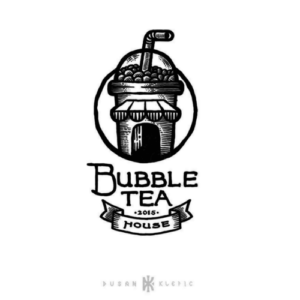Table of Contents
** Minutes
If you own a small e-commerce business (or any small business, for that matter) you may think that branding is out of reach for your company. Fortunately, that’s just not true. Great branding doesn’t always come from agencies; in the internet age, anyone can create a memorable brand for their business. These three inexpensive branding strategies for small businesses will help you get started.
1. Create a strong brand identity
A brand is a proxy for everything about a business: its look and feel, its reputation, its product or service, its customers, and more. Branding is much more than a simple logo or symbol. (Although a great logo is important!) You’ll need a strong brand identity — one that is clear and consistent — in order to make an impact and let your customers know what you stand for.
How can you create a strong brand identity? Do these three easy (and free!) things:
Determine your precise value proposition
What is it that makes your business different from every other, even those that offer the same types of products or services? This differentiator should be totally authentic to your business — and then make it part of your brand identity.
Determine your customer profile
You need a clear image in your mind of who your ideal customer is: their age, gender, income, education, and, most importantly, why your product or service will appeal to them. Then, make sure your brand speaks to that person. Trying to get your brand to appeal to everyone will have the opposite effect; instead, focus on your biggest fans and craft your brand around their wants, needs, and tastes. These customers will be your brand evangelists — they will tell everyone they know about you, and their feedback will help you continue to shape your brand over time.
Not knowing anything about the above company, I know the customer profile by looking at this logo: people who love coffee so much it’s a point of pride to them, they’re cranky when they don’t have it, professionals ages 20 to 40, etc. (Cranky Bear Coffee logo design by 99designs designer infernal kiss.)
Determine your core values and turn them into a mission statement
Your mission statement tells people what you do and why. It should embody your purpose and outline your core values as a business. In other words, it’s a summary of why your company exists.
2. Be unforgettable
It can be easy and inexpensive to make your brand unforgettable. Here’s how it works:
Choose a great name
Making a first impression takes an instant — and for most e-commerce businesses, it’s either your name or your logo that people see first. Getting your name right can help ensure your business succeeds, and a bad name can just as easily drive people away. To arrive at the best name, remember these tips:
- Check for uniqueness by seeing what shows up when you Google your potential name (this will also help you make sure it doesn’t look terrible as an e-commerce domain name).
- Avoid initials and obscure acronyms.
- Avoid inside jokes or puns, unless you are 100 percent sure your audience will understand the reference.
- Make sure your name is more than a descriptive phrase. “Bread Shop,” for example, is a little blah.
Clarify your look with a logo
You’ve already decided on a name and what that name stands for; it’s time to translate those elements into a logo. Unless you’re a designer, consider working with a professional graphic designer to create your logo instead of doing it yourself. A logo is the first step in creating the look and feel of your brand because it will stay at the heart of any visual branding strategy, and be woven throughout every bit of your brand’s presence, both online and in the real world.


This logo uses a hand-drawn look for an authentic, homey feel and turns the business’s name into an image. This kind of logo works brilliantly for a small business that wants a down-to-earth, homemade but still hip feel. (Bubble Tea House logo design by 99designs designer Dusan Klepik DK.)
You can get a fantastic-looking, inexpensive logo with a logo design contest, or work directly with a freelance designer and agree on a price that works for both of you. Working one-on-one with a designer is recommended if you already have a good idea about the direction you want your logo to go in, while the contest model works best if you want to see multiple concepts, ideas, and styles before making a decision.
Learn how to get the best logo for your business with this free, step-by-step guide.
3. Get your brand seen
All that’s left to do now is share your brand with the world! There is more than one great way to do this, even with a small budget.
Share your expertise
Establish yourself as an authority in your field by sharing your expertise. Display your knowledge, your credentials, and your skills. Host question and answer sessions and create podcasts to share your knowledge with current and prospective customers. All of your original content can display your expertise and credibility, and start conversations with your audience. Let customers know that you know what you’re doing and that they can trust you — and, by extension, your brand.
Get smart about your social
Leverage your social media platforms so they are part of your e-commerce branding strategy. This means ensuring that your profiles have the right brand look and voice and showcase your brand’s value to visitors. Don’t spin your wheels on every social media platform around; stick to where your customers spend their time the most.
Once you’ve chosen those 1, 2, or 3 platforms, update them every day if you can (or at least a few times a week) with awesome, original, and on-point curated content. Engage with your customers; don’t just talk at them. Share their user-generated content and participate in social commerce. And most importantly, make sure your brand comes across clearly on each platform.


If you work with a designer to create your logo, they can generate various iterations of the logo so you can brand yourself throughout each social media platform. (Arts Lobby logo and social media pack by 99designs designer signmade.)
Branded giveaways
Give away branded promotional products, but only if they’re useful and related to what you or your customers do. You can also consider teaming up with similar, like-minded businesses for giveaways. Just remember to keep the items relevant to your customers. Branded sticky notes are probably not exciting for customers of a sporting retail site — but customers of an online teaching supplies company or an e-commerce accounting website? Sounds like a win.
Final thoughts
Remember, branding is totally doable for all businesses, even if you’re managing an e-commerce store by yourself. By creating a strong, memorable brand identity and presenting it to potential customers, you’re executing high-level branding that any agency would be proud of.
Learn more
Learn how to bring in more customers that are actually likely to place an order on your store — and turn them into repeat buyers. Download “How to Nail the Customer Experience.”



